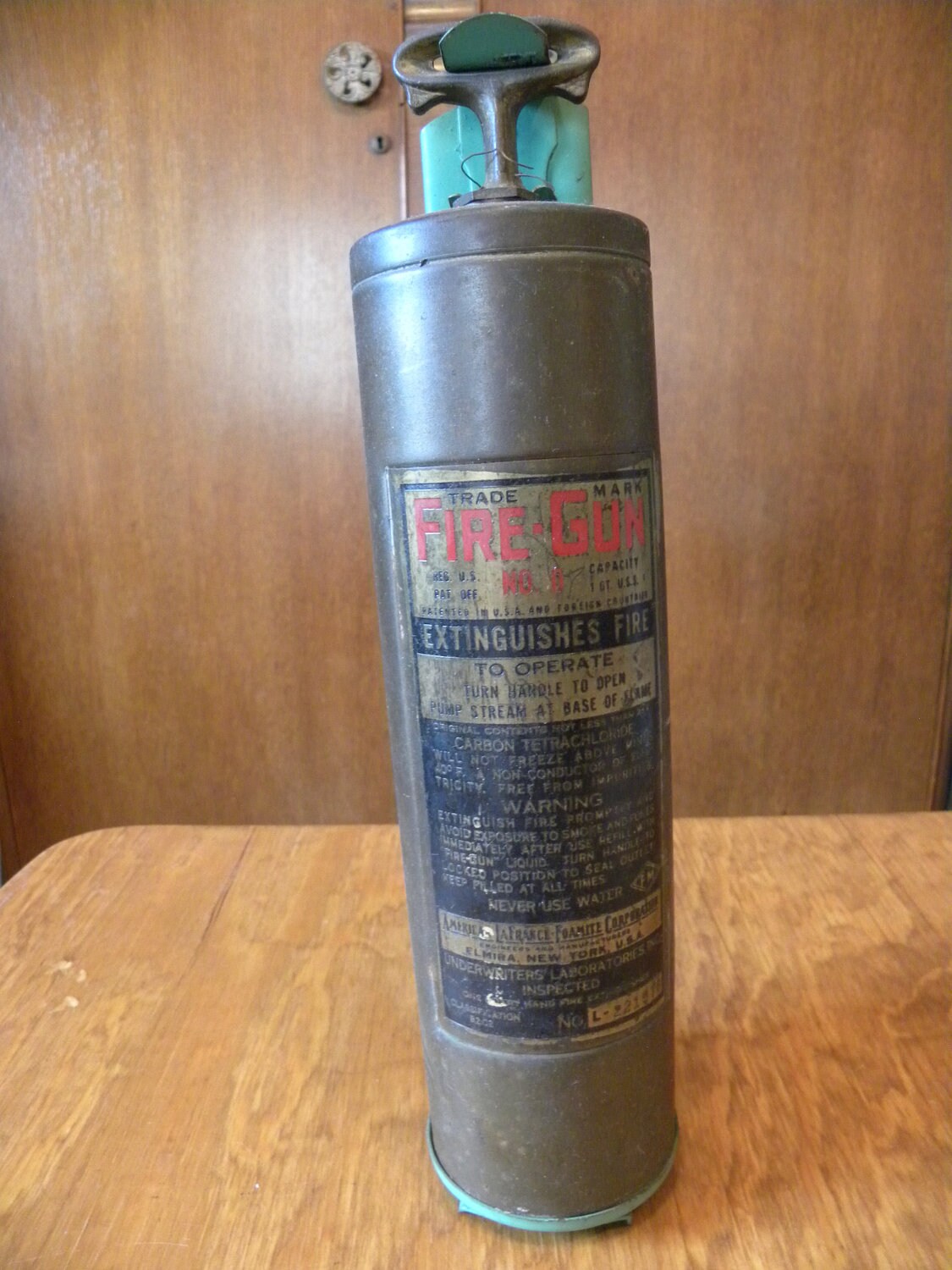Fire extinguishers come in all different shapes and sizes and are a common site in public buildings. Most of us recognize them as red cylinders with black hosing attached. Fire extinguishers come in different types with some being designed to put out oil fires while others are used for paper, wood and fabric fires. They are a must have safety component in public buildings and these building are not granted occupancy certificates until fire extinguishers are in place. But who invented the fire extinguisher? Read on to find out.
- Do Fire Extinguishers Have Serial Numbers
- Pyrene Antique Fire Extinguisher
- Pyrene Fire Extinguisher Serial Numbers List
Who invented the Fire Extinguisher?
Pyrene Fire Security Manitoba has been a fire equipment service agency and product supplier for Manitoba and the surrounding area for over 30 years. We have earned a reputation for professional, comprehensive service packages, and quality life-safety / building. There is a plate on the front with the logo, locations, patent info and more. The plate says that it is a 1 1/2 quart hand fire extinguisher. Serial number is: 826746. This is in unrestored condition with a couple dings. Antique Brass Pyrene Fire Extinguisher Soda Acid Empty Vintage 1940's. This is a '6-digit' serial number is '745434' of the manufacturing run.
The Early Fire extinguisher
As with most inventions there is a lot of conjecture about who invented the item first. The first recognized patent for a fire extinguisher was in England in 1723. A man named Ambrose Godfrey who was a well known chemist invented a device designed to fight fires. It consisted of a cask of fire extinguishing liquid and a pewter chamber of gun powder. When the gun powder was ignited (by a fire itself) it would explode and cause the fire extinguishing liquid to be dispersed all over the area thus extinguishing the fire.
The Modern Fire Extinguisher
The basis for the modern hand held fire extinguisher was invented by Captain George William Manby in 1818. It was a copper vessel with 3 gallons or 13.6 liters of pearl ash and compressed air. The compressed air would be released forcing the pearl ash out through a tube or hose towards the fire. Many variations were designed from this original model. The first Soda-Acid fire extinguisher was patented in 1866 by a Frenchman named Fancois Carlier. He combined water, sodium bicarbonate and tartanic acid to produce a fire extinguishing liquid. The chemical foam version of the fire extinguisher was invented in 1904 by Russian born Aleksandra Loran. It combined water and foam made from licorice root. It also contained sodium bicarbonate and when activated would squirt a whitish-brown foam onto the fire. In 1912 Pyrene invented the Carbon Tetrachloride fire extinguisher which worked by pumping CTC out of a mental container by hand. It would essentially suffocate the fire but was also toxic enough to suffocate people particularly in enclosed spaces. Despite this fact it was used in the automotive industry for years. CO2 fire extinguishers were invented by Walter Kidde Company in 1924. Then in 1928 DuGas invented a dry-chemical version of the fire extinguisher. This was a copper cylinder with an internal CO2 cartridge. When needed a wheel at the top would be turned puncturing the CO2 cartridge which would pressurize and discharge the dry- chemical powder.
Fire Extinguishers Today
Today modern fire extinguishers still work under the same principles as Manby’s did. A fire suppressing substance is forced out of a hose or tube by a compressed gas of some sort. There are two main types of fire extinguishers on the market today. The gas cartridge type where the compressed gas is stored in a cartridge (usually Carbon Dioxide or CO2) or the stored pressure variety in which the gas is stored in the main vessel of the extinguisher itself. A stored pressure extinguisher usually contains compressed air. In both type of extinguisher when used the gas is released in a controlled way to push the fire suppressing material out of the extinguisher.
Related Articles
Do Fire Extinguishers Have Serial Numbers
Pyrene Antique Fire Extinguisher
